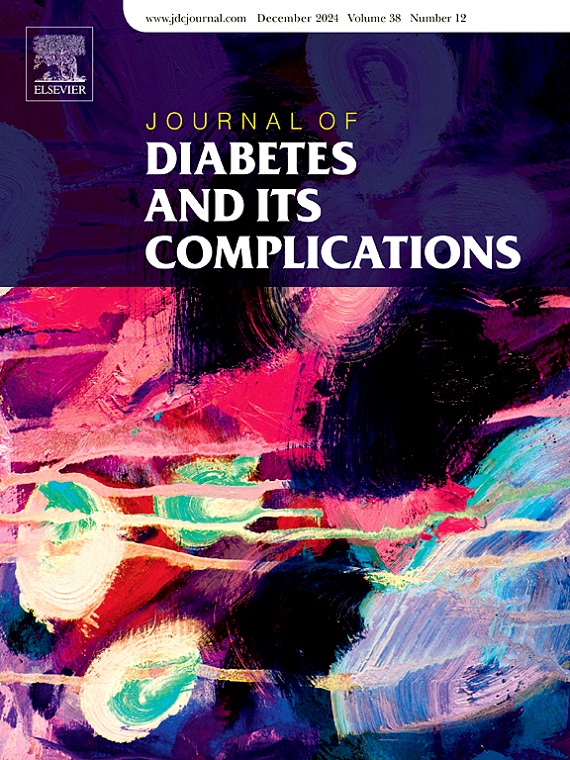成本-效用比较分析:中国2型糖尿病患者的奇列他和西格列汀
IF 3.1
3区 医学
Q3 ENDOCRINOLOGY & METABOLISM
引用次数: 0
摘要
作为一种结构独特的过氧化物酶体增殖物激活受体泛激动剂,chiglitazar在2型糖尿病(T2DM)的血糖控制和脂质管理方面显示出双重治疗效果。尽管有这些临床优势,但在中国的医疗保健系统中,比较齐格列他与西格列汀等传统疗法的综合药物经济学评估仍然缺乏。目的:本研究旨在对中国治疗2型糖尿病的奇列他与西格列汀进行成本-效用比较分析,从医疗保健系统的角度评估长期临床和经济结果。方法收集在中国进行的一项双盲、3期随机对照试验的患者人口统计学和治疗后效果数据。采用英国前瞻性糖尿病研究结果模型2.1来评估长期有效性和相关成本。使用单向和概率敏感性分析来解决不确定性。此外,在情景分析中,利用二分搜索法估计西格列汀的最佳年成本。经过40年的模拟,不同治疗组的预期寿命结果是相似的:吉列他32 mg组14.93年,吉列他48 mg组14.94年,西格列汀100 mg组14.93年。相应的质量调整寿命年(QALYs)分别达到12.82、12.83和12.81。模拟期间的总累积成本为44,241.09美元(吉列扎32毫克),45,044.25美元(吉列扎48毫克)和44,821.45美元(西格列汀100毫克)。长期经济评估显示,32 mg的奇列他具有最佳的成本效益,而100 mg的西格列汀是最不经济的选择。单向和概率敏感性分析都证实了这些发现的稳健性。情景分析显示,100 mg西格列汀与32 mg齐格列他相比,只有年成本降低至少42.33%时才具有成本效益。结论:基于中国医疗环境下的成本-效用分析,相对于西格列汀,奇格列扎在T2DM治疗中表现出更好的长期健康结果和成本-效益。本文章由计算机程序翻译,如有差异,请以英文原文为准。
A comparative analysis of cost-utility: Chiglitazar vs. sitagliptin in patients with type 2 diabetes in China
Background
As a structurally unique peroxisome proliferator-activated receptor pan-agonist, chiglitazar has showed dual therapeutic benefits for glycemic control and lipid management in type 2 diabetes mellitus (T2DM). Despite these clinical advantages, comprehensive pharmacoeconomic evaluations comparing chiglitazar with conventional therapies like sitagliptin remain unavailable for China's healthcare system.
Objective
This study aimed to conduct a comparative cost-utility analysis of chiglitazar versus sitagliptin for T2DM treatment in China, evaluating long-term clinical and economic outcomes from a healthcare system perspective.
Methods
Data on patient demographics and post-treatment effects were collected from a double-blind, phase 3, randomized controlled trial conducted in China. The United Kingdom Prospective Diabetes Study Outcomes Model 2.1 was employed to evaluate the long-term effectiveness and associated costs. Uncertainties were addressed using one-way and probabilistic sensitivity analyses. Additionally, the binary search method was utilized to estimate an optimal annual cost for sitagliptin in scenario analyses.
Results
After a 40-year simulation, the life expectancy results were comparable among treatments: 14.93 years for chiglitazar 32 mg, 14.94 years for chiglitazar 48 mg, and 14.93 years for sitagliptin 100 mg. The corresponding quality-adjusted life years (QALYs) reached 12.82, 12.83, and 12.81, respectively. Total accumulated costs over the simulation period were $44,241.09 (chiglitazar 32 mg), $45,044.25 (chiglitazar 48 mg), and $44,821.45 (sitagliptin 100 mg). Long-term economic evaluation revealed that chiglitazar 32 mg provided the optimal cost-effectiveness, whereas sitagliptin 100 mg was the least economically advantageous option. Both one-way and probabilistic sensitivity analyses confirmed the robustness of these findings. Scenario analysis showed that sitagliptin 100 mg only becomes cost-effective when its annual cost is reduced by at least 42.33 % compared to chiglitazar 32 mg.
Conclusion
Based on cost-utility analysis within the Chinese healthcare context, chiglitazar demonstrates significantly better long-term health outcomes and cost-effectiveness relative to sitagliptin for T2DM management.
求助全文
通过发布文献求助,成功后即可免费获取论文全文。
去求助
来源期刊

Journal of diabetes and its complications
医学-内分泌学与代谢
CiteScore
5.90
自引率
3.30%
发文量
153
审稿时长
16 days
期刊介绍:
Journal of Diabetes and Its Complications (JDC) is a journal for health care practitioners and researchers, that publishes original research about the pathogenesis, diagnosis and management of diabetes mellitus and its complications. JDC also publishes articles on physiological and molecular aspects of glucose homeostasis.
The primary purpose of JDC is to act as a source of information usable by diabetes practitioners and researchers to increase their knowledge about mechanisms of diabetes and complications development, and promote better management of people with diabetes who are at risk for those complications.
Manuscripts submitted to JDC can report any aspect of basic, translational or clinical research as well as epidemiology. Topics can range broadly from early prediabetes to late-stage complicated diabetes. Topics relevant to basic/translational reports include pancreatic islet dysfunction and insulin resistance, altered adipose tissue function in diabetes, altered neuronal control of glucose homeostasis and mechanisms of drug action. Topics relevant to diabetic complications include diabetic retinopathy, neuropathy and nephropathy; peripheral vascular disease and coronary heart disease; gastrointestinal disorders, renal failure and impotence; and hypertension and hyperlipidemia.
 求助内容:
求助内容: 应助结果提醒方式:
应助结果提醒方式:


